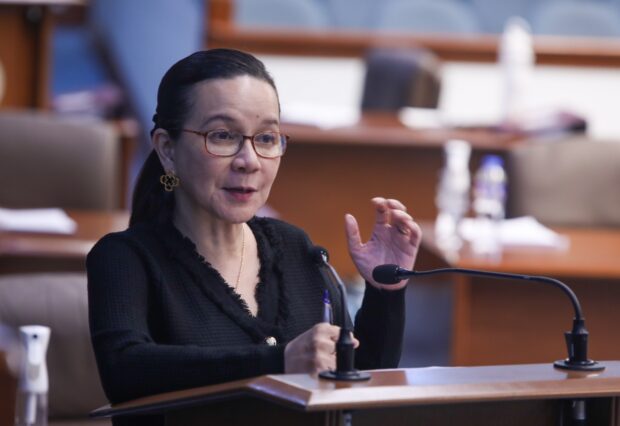
Sen. Grace Poe —Senate PRIB
Despite claims that the country’s balance in the supply and demand of rice remains “sound,” Sen. Grace Poe on Wednesday urged the government to take steps to ease price pressures because of India’s decision to ban the export of rice.
The senator made the call after Undersecretary Mercedita Sombilla of the Department of Agriculture (DA) assured consumers on Tuesday that the country’s supply situation remained sound.
Sombilla said the DA was closely monitoring developments in the prices of fertilizer and fuel, the Black Sea grains initiative and India’s rice export ban, but fertilizer and fuel prices were the most worrisome.
She said farmers should take the opportunity to boost production because of developments in the global food situation.
But Poe, chair of the Senate committee on economic affairs, said the Philippines should not feel immune from the possible collateral impact of India’s rice export ban even with limited Philippine dependence on Indian rice.
“The decline in global supply from the biggest rice exporter is expected to cause a spike in global rice prices because of speculation,” she said.
She cited how Vietnam, which supplies more than 90 percent of the Philippines’ rice imports, has already increased its price to $600 per metric tons from the previous $500 per MT.
“We (in government) have an obligation to feed 113 million Filipinos, especially the 3.4 million youth who rely on the government’s feeding program,” said Poe.
Demand will continue
The senator said demand for this commodity will continue among Filipinos, who consume an average of 118.81 kilograms, or more than two sacks of rice each year, mainly because of their “unlimited rice” mentality.
“The reasons for such high import dependence are too many to discuss here. Simply put, our agriculture sector is not blessed with either good geography or good governance,” Poe said.
Poe said that in 2022, the Philippines imported 3.79 million MT of rice, with 3.16 million MT coming from Vietnam. The next largest trade partners were Myanmar, Pakistan, Thailand and India.
Citing data from the Philippine Statistics Authority, Poe said the Philippines is only 81.5 percent rice self-sufficient, which would mean that the rest of the requirement is being imported.
“This means that in one fell swoop, India has created a 17.86 million MT shortage in the global rice market. Those who will fill that gap can certainly charge a premium,” she said.
Poe said she looks forward to scrutinizing the 2024 budget that the DA will propose.
RELATED STORIES:
Planned gov’t-to-gov’t rice importation bucked
Bongbong Marcos on P20/kg rice: ‘We’re not there yet, but we’re doing everything we can’
DA reports increase in rice production